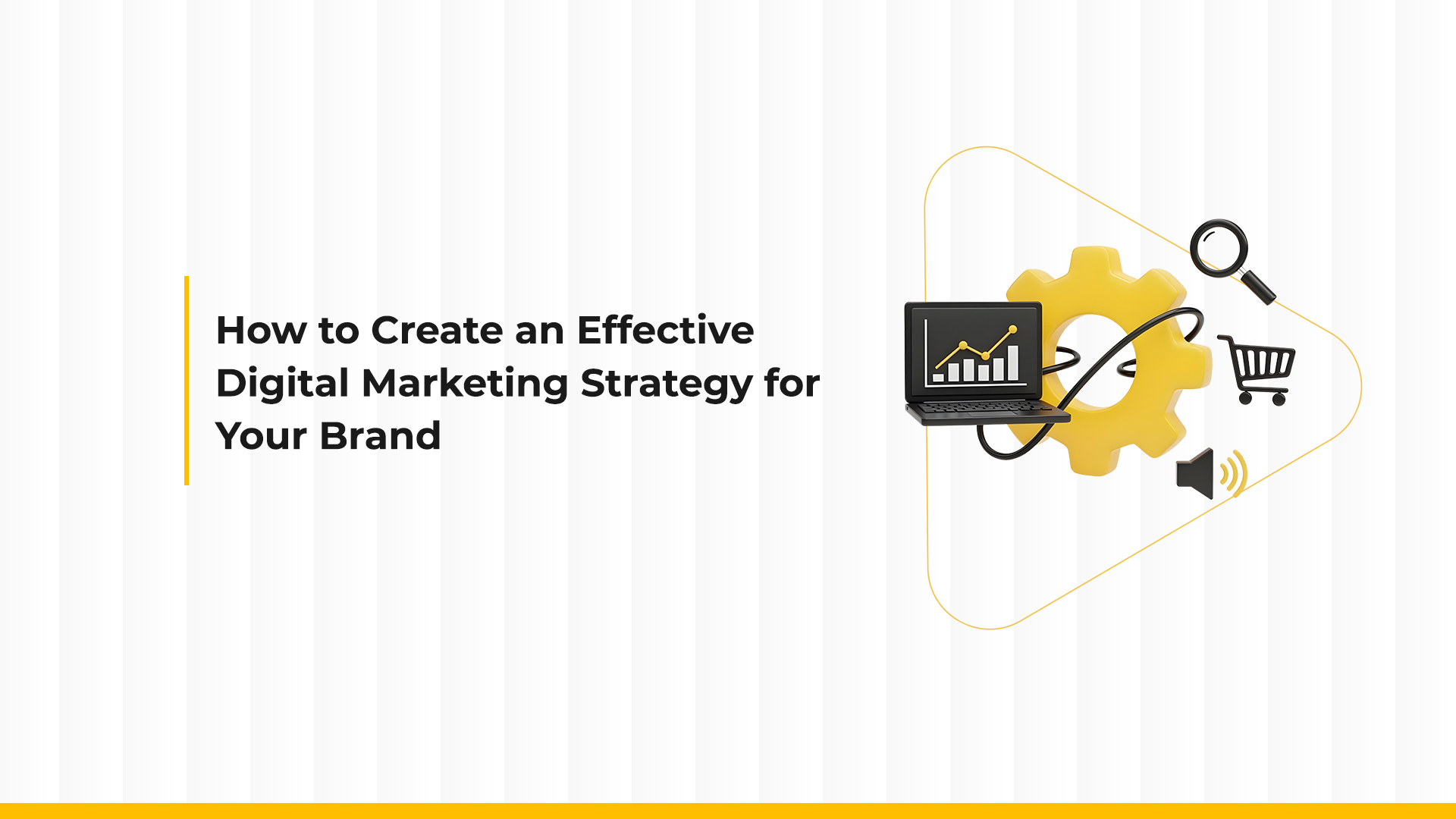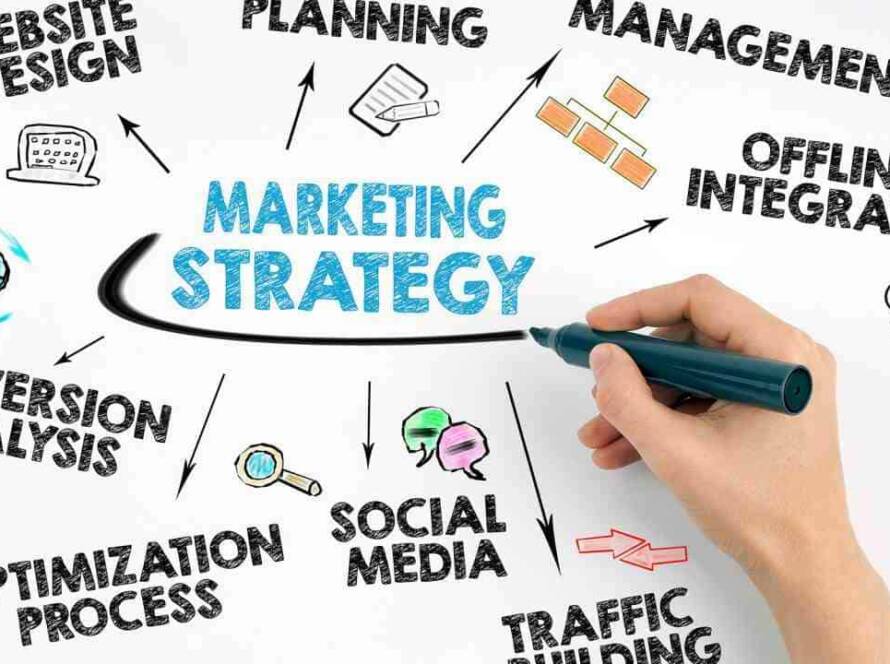In today’s era of advanced technology, a well-structured digital marketing strategy has become an essential requirement for any brand seeking success and growth. Digital marketing is not just about promoting products or services — it’s about deeply understanding the market and your target audience while leveraging the right tools and techniques.
This article explores how to create an effective digital marketing strategy, with a focus on brand strategy, brand improvement methods, and the importance of digital marketing.
Goals of a Digital Marketing Strategy
Your marketing goals should be clear, measurable, and realistic. Examples include:
- Increase brand awareness: Make more people familiar with your brand and products.
- Boost sales: Set a specific target for sales growth over a defined period.
- Improve conversion rates: Increase the percentage of visitors who become actual customers.
- Expand your customer base: Attract new customers through innovative marketing approaches.
Defining goals helps guide your marketing efforts effectively and allows you to measure success later.
Studying the Target Audience
Understanding your target audience is a core part of any digital marketing strategy. You must know who your customers are and what their needs and preferences are. Here are a few steps to follow:
- Create Buyer Personas:
Develop profiles that represent your ideal customers, including demographic, behavioral, and psychological details. - Collect Data:
Use surveys, interviews, and data analysis to understand customer behavior and motivations. - Analyze Competitors:
Study how your competitors interact with their audiences and identify the strategies they use.
Understanding your audience enables you to tailor your marketing messages and make your campaigns more effective.
Choosing the Right Channels
An effective digital marketing strategy involves selecting the right channels that best reach your audience. Common digital channels include:
- Social Media:
Platforms like Facebook, Instagram, Twitter (X), and LinkedIn. Focus on the platforms where your audience is most active. - Search Engines:
Use SEO (Search Engine Optimization) to improve your website’s visibility in search results, and complement it with PPC (Pay-Per-Click) advertising for broader reach. - Email Marketing:
A highly effective way to communicate directly with both existing and potential customers.
The right channel choice depends on where your audience spends their time and how they engage with content.
Creating Engaging Content
Content is the cornerstone of digital marketing. You need to create valuable and engaging content that aligns with your audience’s interests. Here’s how:
- Choose the Right Content Type:
Use articles, videos, podcasts, or infographics — depending on what resonates most with your audience. - Use Storytelling:
Employ storytelling techniques to capture attention and build emotional connections. Stories make your content more memorable and impactful. - Provide Real Value:
Ensure your content delivers genuine value, whether through useful information, actionable tips, or practical solutions.
Running Advertising Campaigns
Advertising campaigns are a vital component of digital marketing. Paid ads help you reach wider audiences and increase brand awareness. To execute successful ad campaigns:
- Set a Clear Budget:
Define your advertising budget and distribute it across different platforms. - Target the Right Audience:
Use advanced targeting tools available on ad platforms to reach audiences based on their interests and behaviors. - Analyze Performance:
After launching campaigns, use tools like Google Analytics and social media insights to evaluate ad effectiveness. Track key performance indicators (KPIs) such as CTR (Click-Through Rate), CAC (Customer Acquisition Cost), and conversion rate. - Refine Your Strategies:
Based on your performance data, adjust your campaigns. If some ads perform better, consider allocating a larger budget to them or improving underperforming ones.
Brand Improvement
Monitoring performance is a key part of digital marketing. Use analytics tools to track campaign results and measure outcomes.
- Define Key Performance Indicators (KPIs):
Set measurable KPIs that align with your goals — such as website visits, conversion rates, new customers, and customer retention. - Use Analytics Tools:
Platforms like Google Analytics, Facebook Insights, and HubSpot provide valuable insights into customer behavior and campaign effectiveness. - Adjust Strategies Based on Data:
Be ready to refine your marketing tactics depending on performance trends. Focus on channels that yield the best results.
Building Strong Customer Relationships
Long-term customer relationships are essential for a successful digital marketing strategy. Focus on developing trust and loyalty through:
- Email Marketing:
Stay in touch with customers by sharing valuable content, exclusive offers, and product updates. - Loyalty Programs:
Create loyalty programs that encourage repeat purchases through discounts, reward points, or exclusive deals. - Social Media Engagement:
Be active on social media — reply to comments, share relevant content, and join conversations to strengthen your brand community.
Content Marketing
Content marketing is one of the most powerful tools in digital marketing. By offering valuable, relevant content, you can attract customers and build trust. Here’s how to use it effectively:
- Start a Blog:
Publish industry-related articles on your website. Use proper keywords to improve SEO and drive organic traffic. - Create Visual Content:
Leverage videos and infographics to grab attention. Visual content is often more engaging and helps communicate your message clearly. - Host Webinars:
Offer webinars to share valuable insights and establish yourself as an expert in your field.
Innovation and Adaptability
In the ever-changing world of digital marketing, innovation and adaptability are essential.
- Stay Updated with Trends:
Keep up with the latest digital marketing trends — such as AI-powered marketing, influencer marketing, and video marketing. Innovation keeps you ahead of competitors and strengthens your strategy. - Experiment with New Approaches:
Don’t hesitate to test new marketing tools or strategies. Conduct A/B tests to compare campaign results and make data-driven decisions.
Conclusion
Creating an effective digital marketing strategy requires careful planning and a deep understanding of your target audience. By setting clear goals, studying your audience, selecting the right channels, and creating engaging content, you can strengthen your brand’s online presence and drive higher engagement.
A strong brand strategy helps you build credibility and trust. Through brand enhancement, relationship building, and content marketing, you can achieve measurable results.
Finally, remember that digital marketing is a continuous journey. Success comes from consistent evaluation, adaptation, and improvement. Invest the time and effort to refine your strategy — and you’ll see tangible results that boost your brand’s growth and help you reach your marketing goals.





